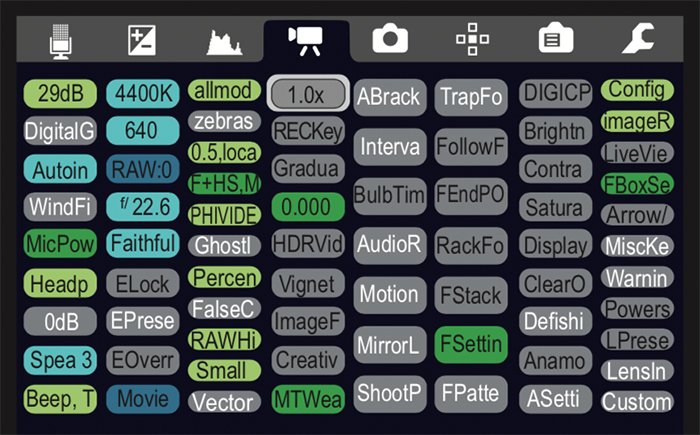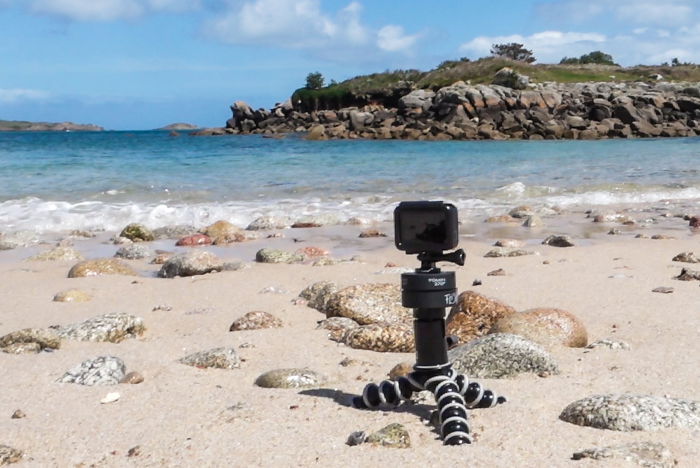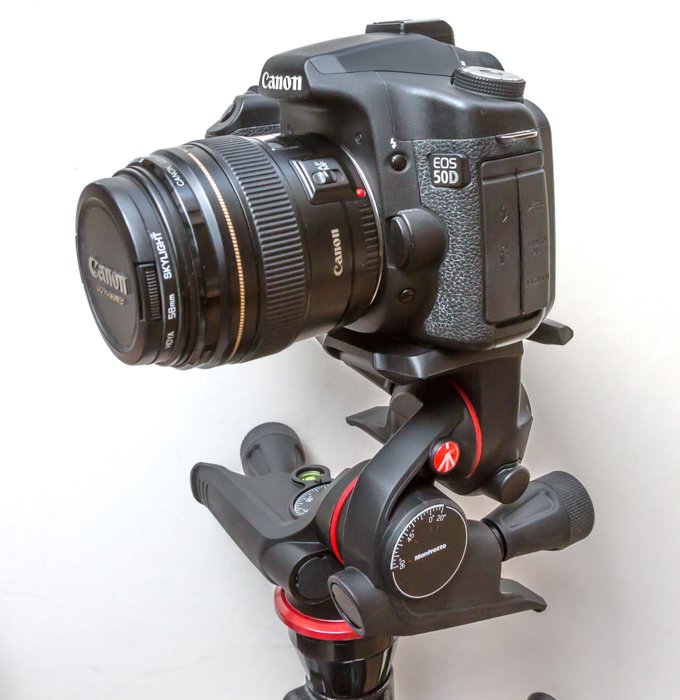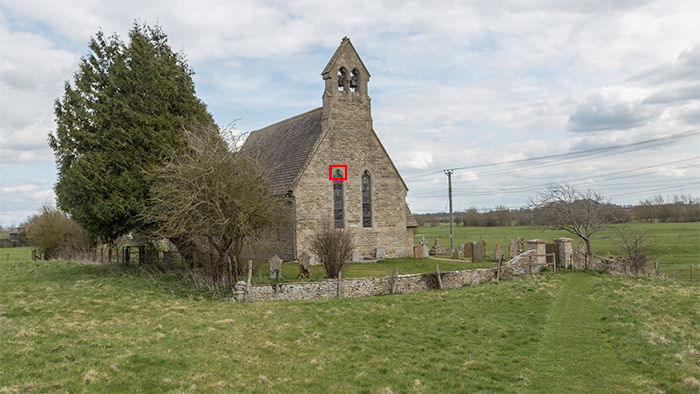Time-lapse photography can be a lot of fun, and it can also produce some stunning results. In this article, we’ll provide five time-lapse ideas for cool photography projects. We’ll discuss the basics of the art form, and we’ll provide some tips on how to get started.
5. Time-Lapse Ideas for People at Leisure – In-Camera Video
One of the simplest time lapse techniques involves using a dedicated camera such as a GoPro. Point it at your chosen subject and you’re done.
In this example, I set the camera to record one frame every 0.5 seconds. I was filming people going across the River Wye in a hand-pulled ferry.
The crossing only takes a couple of minutes. People get into and out of the boat at a brisk rate. I wanted a frame rate that was slow enough to compress the timescale. But it also had to be fast enough to resolve the action.
When played back at 30 fps, this results in the crossing occurring at fifteen times normal speed.
The GoPro camera can also shoot at 1, 2, 5, 10, 20 and 30 second intervals. Less frequent intervals would have made the action of the ferryman difficult to see.
We wouldn’t have known if he was coming or going.
4. A Sunset – Processed In-Camera
Shooting a sunset is more difficult. The light changes during the selected time period.
To overcome this, use remote control camera software. This can compensate by increasing the ISO or decreasing the shutter speed as the light dims.
You can also make manual adjustments to the exposure. Or you can apply them in post using keyframes or Lightroom‘s plug-in LR Timelapse.
You can also download Sony’s Timelapse app. It’ll make the process relatively simple without the need for any post processing.
The app allows you to specify custom settings for interval and number of shots. It also features a number of presets. These handle common situations where the light is changing as in the case of a sunrise or sunset.
Here’s an example of a sunset shot using the Timelapse app. The default interval is of one shot every ten seconds for 240 exposures.
3. Adding Camera Motion – Magic Lantern In-Camera Time Lapse
If you own a Canon DSLR, even an old one, you can shoot a timelapse video. Even if it’s not available on your camera.
The open source Magic Lantern software was developed for Canon users. It helps them squeeze more out of their cameras when using them for video.
Magic Lantern is an alternative operating system. It sits alongside Canon’s own OS to provide significant new functionality.

One of the many features available is a user-defined video frame rate.
In this example, I mounted my old Canon 50D on a tripod that protruded from a car sun-roof. Then I took it for a drive to Bampton (where parts of Downton Abbey were filmed).
I set the frame rate to five frames per second to achieve an effective speed increase of five times. This is fast enough to make it appear I’m driving at around 200 mph. But I’m staying within the legal speed limit.
A longer time between frames would have made the final result too fast. We wouldn’t see what’s going on when viewed at the normal speed of 25 fps.
2. Panning the Camera
Attaching a camera to a car or a bicycle is an easy thing to do. This is especially true if you have a GoPro. These cameras are designed for such uses.
A quick scan of the internet reveals a wide selection of clamps. Not only for the GoPro but also for many other cameras including point-and-shoot and DSLRs.
Moving the camera during a time lapse shoot in this way adds extra interest. But it’s not the only technique.
One of the simplest (and cheapest) camera movement devices available is the clockwork panning head. Mount the panning head on a tripod. Attach your camera and align it to point at the scene you want to see at the end of your shot.
Then twist the head to point to the scene at the start of the shot. Start the time lapse sequence on your intervalometer. And now let the clockwork mechanism turn the camera.
Take care to ensure that the head is level. Otherwise you will find the horizon will tilt during playback.

The Flow-Mo head is not limited to tiny cameras such as the GoPro. It will also pan a DSLR.
If you plan to fit a heavy lens to your camera, use the lens mount ring. Don’t use the tripod mounting point on the camera body.
This will put the center of gravity over the tripod. And you’ll avoid applying stress to the panning mechanism.
It’s important to realise that the mechanism is constantly rotating the camera. Even during the exposure.
For wide-angle shots, this is unlikely to result in any movement blur. For long focal length lenses, it’s possible that this could result in a loss of sharpness.
Of course when viewed as a sequence at 30 fps, it’s not an issue. If you’re shooting at full resolution, you might want to process a few of your images as normal still photos.
Here’s a clip made using the Flow-Mo panning head.
Linear Motion
It’s also possible to fit a camera to rails to create a linear, rather than a panning camera movement. Rail systems are usually expensive. They generally incorporate some form of motorised transport.
The more sophisticated systems use stepper motors under computer control. These can move the camera by a specified amount, stop, trigger the camera and move again.
This ensures that each photo is taken only while the transport is not moving. This results in a sharp image.
Computer control of the movement also ensures that the camera moves by the same amount between exposures. This means a smoother end result.
1. Hyperlapse
Hyperlapse is the process of taking a photo. The moving the camera in a linear fashion a small amount (usually only a few inches). Then you recompose and take another photo.
You repeat this sequence as you inch the camera into the scene. This follows a path that the viewer will follow when the stills are combined into the final video.
It’s very important to be able to position the camera consistently between shots.
This not only means using a sturdy tripod but also the right type of head. This makes the process of lining up the image for the next shot much easier.
You’re taking many hundreds of exposures. Anything that helps you compose the next shot more accurately is going to save you time. And it’ll give you better results.
A conventional ball-head is quick to adjust for normal photography. It’s not so easy to position with precision – especially if your camera is sporting a heavy lens.
Here’s another requirement of making a smooth hyperlapse video. Line up each shot with reference to a fixed point in the scene. For this job, a geared head is invaluable.

If your camera can show the live image from the sensor on the rear screen, you can overlay guide lines or grids from a menu. Use these as markers against which to align a chosen point in your scene.
Alternatively, you can use one of the focus points visible in your viewfinder. Compose the initial shot with the marker positioned over your visual anchor point.

Next, take the shot and move the camera along your chosen path a small distance. How far will depend both on the desired speed of the final result and the angle of view for your lens.
As a general rule, you should aim at moving the camera no more than the length of your foot.
Have you already determined the length of the final video and the frame rate? Then you’ll know how many photos you will need to take (frame rate x length of video in seconds).
Divide this number into the length of the path you intend to follow. This will give you the distance to move between each photo.
Adjust the geared head to align the chosen visual anchor with your marker. Note that positioning this point alone is not enough. It won’t ensure a smooth and consistent sequence.
It’s also important to keep an eye on the horizon or other strong horizontal and vertical lines. This will guard against rotational wobble.
Here’s a short clip from this basic hyperlapse that demonstrates the technique.
Long Period Timelapse Project Considerations
The previous examples all cover a short period of time – an hour or less. What if you want to shoot a period of several hours or days though?
Generally, the total number of shots is not likely to be that different. This is determined by the time it takes to view the final result rather than the time taken to film it. You can use a single high-capacity media card.
Battery life presents a problem for long period timelapse projects. You can swap batteries if you happen to be on hand at the appropriate time. Bu you’ll find the intervalometer is likely to reset. You might also move the camera in the process.
It’s a good idea to forget batteries altogether and buy a mains power adapter. These are available for most cameras but of course limit where you can shoot.
Cameras conserve energy by powering down to a standby mode. This extends battery life. Check if your camera has its own built-in intervalometer. This will wake up the camera when the time comes for the next exposure to be taken.
If you’re using an external third-party intervalometer, it may not wake it up. Check the operation before you start shooting. If there’s a problem, you should be able to disable the auto-sleep mode altogether.
Lighting may also prove to be a problem over a long period. Say you’re taking one shot every hour over a period of a week. The ambient light level will change. This will cause an annoying flicker.
Some flickering can be fixed by ‘deflicker’ treatments in post. But this does have its limitations. It’s best to take control of the lighting. You can use a constantly lit LED source or conventional flash.
If you set up your subject indoors and use flash, you’ll be able to achieve consistent lighting from shot-to-shot. A built-in flash will be powered by the camera’s own battery. But built-in flash produces a very flat illumination.
You can get better results with off-camera flash. This means either using mains powered studio flash or battery powered flash units.
As with cameras, some flash guns can accept external power. This is often only to power the high-voltage capacitor that discharges into the tube. It’s not to power the control circuits themselves.
Like cameras, battery powered flash units will switch into standby mode. If you want to keep your flash powered up for long periods, look for an adaptor. This effectively replaces the normal batteries.
Another options is to use the camera manufacturer’s own brand of flash gun. The flash should trigger when the intervalometer instructs the camera to take the next photo.
Be aware that some third-party flash units may not wake up in time when the camera takes the next exposure.
Always test your setup before committing to a lengthy shoot.
Conclusion
We’ve shown you 5 best time-lapse photography subjects. And their technical challenges and how to overcome them.
Now it’s up to you to go out there and create some amazing time-lapse videos.
Let us know in the comments below what your favourite time-lapse photography subjects are!